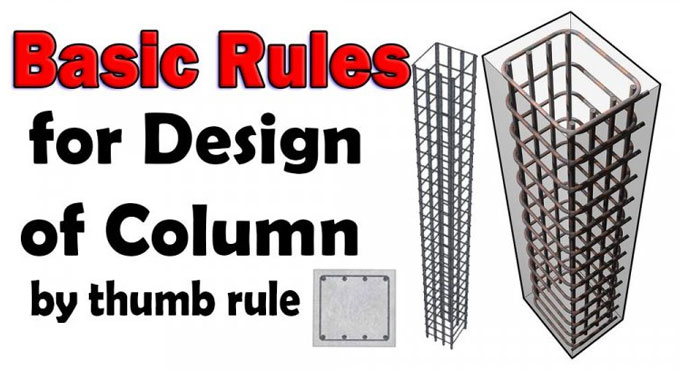
Thumb Rules to Follow While Designing Columns
Columns are essential support structures that are almost inevitably used in any construction projects. From ancient times, columns have been an indispensable part of erecting buildings, them being one of the most important load-bearing members. Obviously, one needs to be careful while designing such important structures.
As per the construction sciences and technologies, there are many rules applicable to specific columnar structures. However, there are some few basic rules of column designing that all engineers can keep in mind while designing most types of columns and similar vertical supports.
Today, we will discuss these important thumb rules of column design in this article. Needless to say, columns need to be designed keeping in mind the total amount of forces acting on the structure. But also, keeping these basic guidelines in mind can prevent architects and engineers from making silly mistakes.
Rule 1: Essentially, the size of the columns would depend upon the total amount of forces acting on the column. In short you can consider this as the total load on a column. This will make or break the column, so you need to be ensuring that your columns design can withhold this entire load and anything else that may come later.
That is, the total load on a column may be not only the weight of the structure that it bears, but also the movable materials that structure will bear. For example, while designing a multi-storied godown, you will need to care about not only the weight of the floor and the walls and the roof, but more also, the weight of the goods that are going to be stored on that floor. This can get pretty great in case of solid materials.
Rule 2: As the engineer or architect you may be tempted to build thin, slender columns for an aesthetic point of view or just to save space. Well, keep in mind that there are limits here about how thin you may go when designing a column. Generally speaking, we never design and build columns less than nine by nine inches thick.
That is, 225 x 225 mm in metric system. Going any lower than that will cause major load askense issues in the column and it may break. Not only that, the column must be large enough to be reinforced by four bars of Fe500 steel, each at least 12 mm thick. Only then the column would be strong enough to support anything at all.
Rule 3: Not just the size of the column, but the stuff that goes into making it count a lot in column design rules as well. The material that the column is built of obviously determines its tensile strength and load-bearing capacity. As such, most construction or civil engineers use the M20 grade
concrete as a baseline for the material of the column. The M20 grade concrete is comprised of the following ratio by volume:
1 part cement
1.5 part sand
3 parts aggregate
0.5 parts water in that
Rule 4: It is not safe to build columns too tall. As a rule of thumb, it?s only safe to build columns about five feet in span. Any higher than that and the column will become too thin for the ratio, and it might become brittle.
Rule 5: The reinforcements that go into building a column enforce significant strength on the column. As such, they have their own minimum specifications as well. The longitudinal bars that you can use in columns must not be less than 12 mm in thickness. However, that does not mean that putting fatter bars in a column will make it stronger. As a rule of thumb, using reinforcement steel bars wider than 50 mm in cross section is not a good idea.
Rule 6: The ratio of reinforcement to material in a column also pertains greatly in determining its strength. The cross-section of the steel in the longitudinal reinforcement should not be less than 0.8. Also, it should not be more than 6% of the total cross-sectional area of the column.
Rule 7: Using stirrups in a column is a great idea for extra strength. You can use 8mm stirrups with 150mm gaps from center to center throughout the column length for good all-over support.


